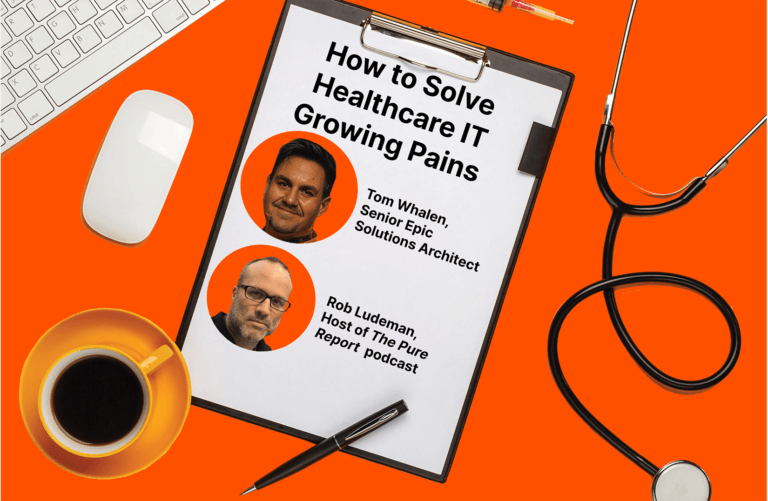A version of this post originally appeared on LinkedIn.
COVID-19 won’t be the only existential crisis your organisation faces in its lifetime, but it is having a profound impact. The boards of almost every business and public-sector organisation are looking to technology for the answers. They’re seeking quick routes to survival and the capabilities that will enable them to thrive going forward.
The questions executives must ask are:
- Is our data infrastructure—the lifeblood of our digital transformation—robust with a modern architecture?
- Does that architecture allow us to better store, manage, safeguard, and utilise data so that we can adapt with rapid agility?
- Can it help us navigate from crisis mode to a new norm in days, not months?
Many organisations have found that they are unable to adapt their business models and accelerate digital transformation. Why? Their fundamental data infrastructures are built with inflexible, costly technologies that prevent them from tapping into the power of data. This inability to deliver data-driven rapid agility has led many businesses to struggle: Retailers are unable to adapt their operations to online models; manufacturers are unable to grow their supply chains. The list goes on.
So what can you do? For many years, we at Pure Storage® have been developing technologies and approaches to managing data designed to help ensure against the impacts of seismic change.
Before taking your next steps, I have some advice based on our experiences working closely with organisations across industries and around the world:
Balance Short-term Problem Solving with Long-term Goals
It’s easy to get caught up in simply reacting to the next problem when in the midst of a crisi. But successfully navigating to a place of safety is more than immediate survival, it’s about having the flexibility to continue responding to change at speed. It’s crucial to really consider the long-term impacts of urgent decisions so that you don’t store up problems for the future.
For example, you don’t want to scale up data capacity to address surging customer demand for your online services in a way that will burden you with rising costs in future. With our model, Pure as-a-Service™, you pay only for what you use, whether your data is on-premises or in the cloud. Spin up data capacity at the flick of a switch and scale down again when you don’t need it. It’s the perfect way to avoid costly knee-jerk decisions that solve only short-term problems.
Drive Efficiency through Automation
You’re in a winning position when you can elevate team efficiency through increased automation. Eliminate complexity, unreliability, and the things that take time and focus. Managing legacy data infrastructures takes up too much valuable time that people could otherwise spend on rapid innovation. At Pure, everything is about simplicity. It’s something I’m proud to say we’ve demonstrated as we’ve supported our customers during this time. Our highly automated systems enable our teams and our partners to remotely install our solutions within hours rather than days and weeks. Then, from an ongoing management perspective, it only takes a mobile phone to administer the entire storage environment.
Forget the Status Quo. Focus on Your Future Vision With Rapid Agility
Many business models have crumbled during the current environment. It’s important to take stock and fully appreciate that what we knew as the status quo is truly over. In that process, review what you can do differently. Those changes will help deliver the behavioural, cultural, and technological change required to create your new norm. Release your organisation from valueless processes, inflexible work patterns, and legacy technologies.
From a data perspective, I know that cloud is often touted as the panacea for all ills, but it’s important to put cloud in its rightful place: It’s an operating model, not the ultimate destination. By making on-premises just like cloud, we have given you a choice: Leverage private or public clouds, depending on the workload, economics, and business objectives. The limits of your infrastructure no longer constrain your business.
While you are going through this urgent process of reflection, consider new ways to consume technology. A flexible consumption model, for instance, will give you a crucial lifeline to rapid agility. Unshackle your org from the traditional cycles of refreshes and paying again for technology you already have.
Instead, seek out approaches, like Pure’s Evergreen™ model, that give you access to all our innovations without forklift upgrades disrupting your operations. Moving to an OPEX¹ model is certainly the new norm for nimble firms and will fit the CFOs desire to generate more value from investments without exposing the business to capital risks.
By modernising your infrastructure, you can move forward to a data-as-a-service mindset with simple, flexible access and consumption wherever your data resides and your business functions. This will help you to lay the right foundations as an organisation to facilitate rapid agility and ensure against the impacts of all kinds of seismic change.
Previous Posts in the Series
Why Do Some Organisations Seem to Thrive in a Crisis?
-
OPEX treatment is subject to customer’s auditor review
![]()






